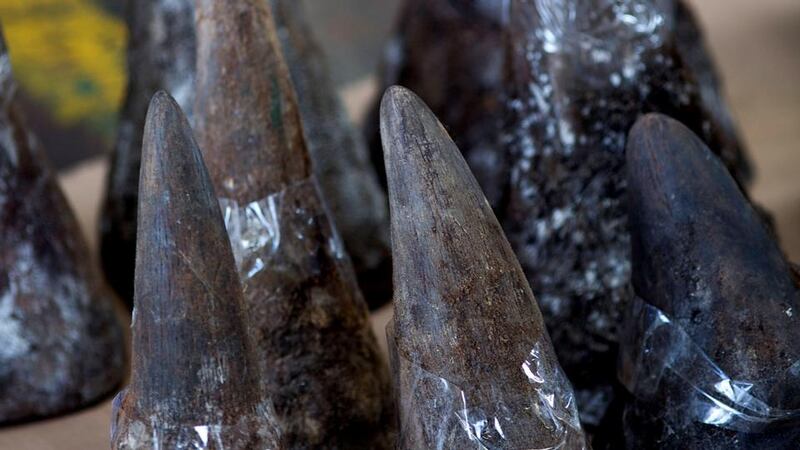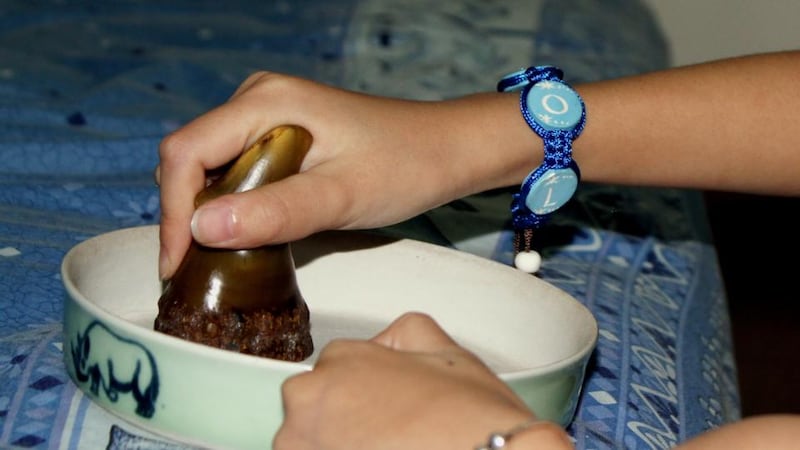An undercover agent at the US Fish & Wildlife Service’s law-enforcement office received an email, on November 10th, 2010, from a man who identified himself as John Sullivan and purported to be in Ireland.
Sullivan said he was searching for a rhinoceros mount or horn to decorate a castle he owned. He had emailed the agent and a secret informant to say he was in the antique-furniture business, had plenty of money and could easily get horns out of the US to Ireland in containers filled with furniture, avoiding detection under US law prohibiting the trafficking of endangered rhino horns.
“Believe ME WE NEVER LOSES A HORN TO CUSTOMS, we have so many contacts and people payed off now, we can bring anything we want out of nearly any country into Europe,” he wrote.


The previous week Sullivan had told the agent, whose name is Curtis Graves, that he could “make it worth my time” because “it pays to be a good middleman”. Sullivan spoke “in a thick accent which sounded to me like an Irish brogue”, Graves said in a court filing.
Less than two weeks later, after an exchange of emails from an eager Sullivan looking to buy as much rhino horn as possible, Graves met two Irish nationals, Michael Hegarty and Richard O’Brien.
They flew into the US through Atlanta on a flight from Dublin for a five-day trip. The two men paid the undercover agent €12,850 for four rhino horns at the informant’s home in Commerce City, Colorado. As soon as the purchase was complete the men were arrested and charged.
Hegarty and O’Brien pleaded guilty to illegal smuggling and were sentenced to six months in a Colorado prison. The sting was the first instance of rhino-horn smuggling involving members of the Irish Traveller community linked to a gang in Co Limerick. It was not the last.
In January a cousin of one of the men, 25-year-old Michael Slattery jnr, was sentenced to 14 months in prison by a New York court for offences relating to illegal rhino-horn trafficking. Between May 2010 and April 2011 he bought two rhino horns in Texas for $18,000 (€13,500), using a “straw buyer” – someone else who completes the transaction – and was caught selling four endangered black-rhino horns to a New York collector for $50,000 (€37,000).
The Irish criminal gang is suspected of targeting museums, galleries, zoos, antique dealers and private collectors in Britain, Europe, the US and South America. Gardaí were last week called to the Co Cork home of the dancer Michael Flatley after rhino horn was stolen from his mansion.
The US government estimates that the illegal trade in endangered-wildlife products, including elephant ivory, rhino horns and turtle shells, is worth up to $10 billion a year. Rhino horn trades for up to $50,000 a kilo on the black market, according to the US congressional research service, making it more valuable than gold or platinum.
A single rhino horn can sell for well above $500,000 in the Far East, according to the US Fish & Wildlife Service. In China the wealthy value it for medicinal purposes.
In Vietnam it is seen as a status symbol and a party drug described as the “alcoholic drink of millionaires”. Horn is ground down and consumed with water or wine in the belief that it will detoxify the body after heavy drinking and prevent a hangover.
Demand for rhino horn has also surged because of the unfounded belief that it is effective against cancer. One rumour in Vietnam, in the mid-2000s, claimed that rhino-horn powder had cured a Vietnamese politician. “That is really just an urban myth,” says Ed Grace, deputy assistant director of law enforcement at the US Fish & Wildlife Service.
But the economics make these lucrative commodities highly attractive to international criminal gangs. “It is high-profit, low-risk crime where you can make as much money smuggling and selling rhino horns as smuggling or selling heroin or cocaine but your chance of going to jail is nowhere near as high,” says Grace.
The “buy-bust” of Hegarty and O’Brien, and the large increase in rhino poaching, prompted the service to crack down on the illegal trade under Operation Crash. (“Crash” is a term for a group of rhinos.)
“Informants started coming to us, telling us there were several Irish individuals across the US that were, for some reason, trying to buy rhino horns. We had never run into that before,” he says.
Grace says they are still searching for two Irish nationals connected with Slattery and a number of other Irish people involved in other purchases. He estimates that about a dozen Irish nationals are probably involved in the trade in the US.
Since the first arrests for illegal trafficking, the sentences handed down by US judges have started to increase. A month before Slattery’s sentencing, a New York antique dealer named Qiang Wang was sentenced to 37 months for smuggling “libation cups”, carved out of rhino horns, from the US to China. Drinking from such cups is believed to bring good health.
They were valued at more than $1 million. Someone dealing in a similar amount of narcotics would have received a much longer sentence, according to Stacey Mitchell, chief of the environmental-crime section of the US Department of Justice’s environmental and natural resources division.
“The sentencing in this case indicates that judges are really starting to get the message and they are starting to increase the sentences,” she says. “Judges are starting to recognise that this is an international crisis. The trade in these species is funding criminal syndicates.”
The money made in trafficking means the killing of rhinos in the wild is no longer confined to isolated incidents of poaching but is part of a supply chain co-ordinated by organised crime.
A decade ago about 30 rhinos a year were killed in South Africa. This increased to 300 five years ago. The figure is expected to be around 1,000 this year. Grace blames the increase on trafficking by criminal gangs. “If something isn’t done to stop these criminal syndicates that are helping to go after these rhinos, the rhinos could become extinct in the next 20 or 30 years – in our generation.”



















